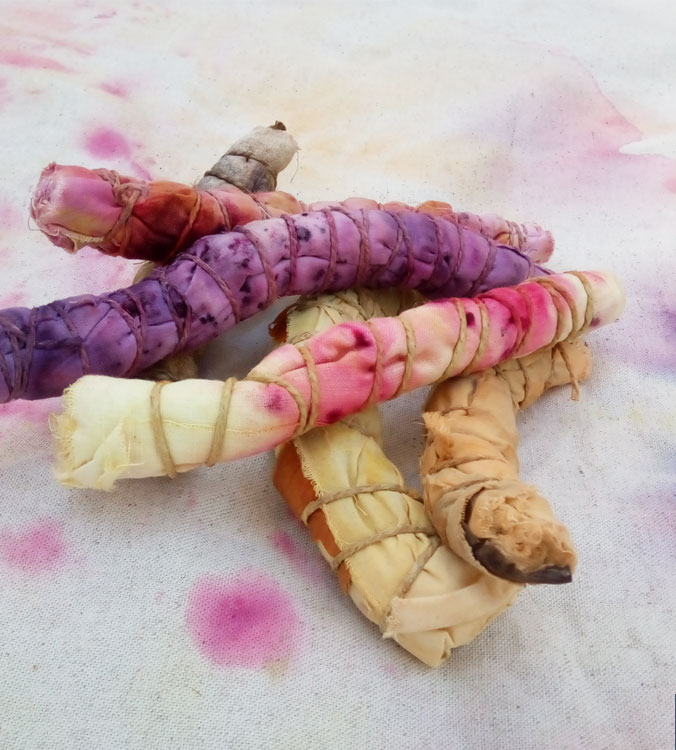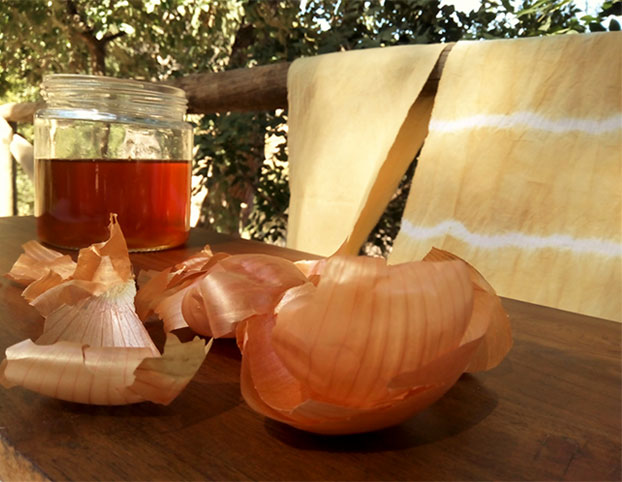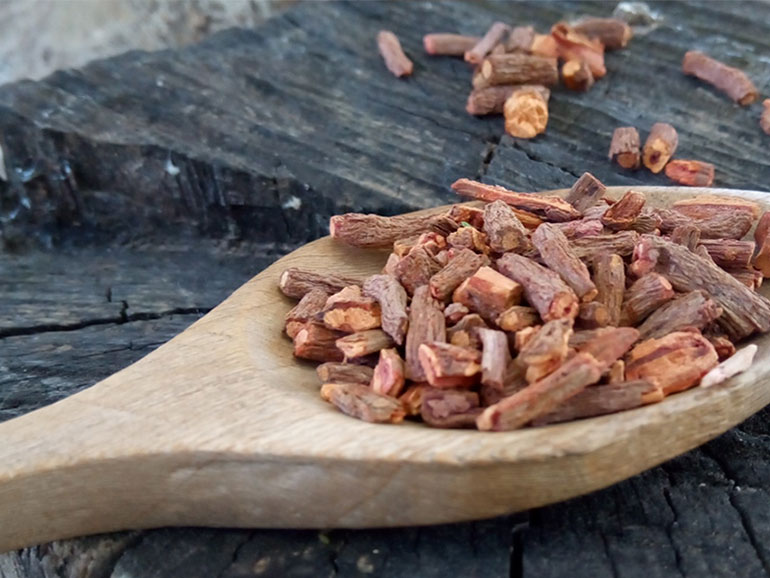

BOTANICAL & ARTESAN DYES AND PRINTS
Find out more about the techniques and materials I use for my creations…



PRINTING TECHNIQUES.
For printing on the fabrics, I use a variety of techniques, although the ones I use most are ECOPRINT and the SHIBORI technique. My main aim is to create unique fabrics. Only material of vegetable origin, minerals and chemical toxin free, natural fibres are used in the creation process. From time to time I use dyes from insects, such as the cochineal.
Ecoprint
Contact dyeing, also known as bundle dyeing or plant printing is an exciting contemporary natural dye technique, used to create unique print patterns on fabrics, without needing to extract the colouring pigments.
For this, fresh or dried flowers and leaves can be used, as well as vegetable materials to create designs that have been described as psychedelic and ethereal.
With Ecoprint, the natural pigments of leaves and flowers are used to print on the material. This is done by applying parts of the plants directly on to the material so that the shape of the leaves or petals is printed on.
Each printing is unique and the result depends on the dyeing power of each plant (which may even vary within the same species, depending on where it was taken from or when it was picked), how the leaves are placed on the material and the type of fabric being used. These unpredictable results are exactly what make this technique so great.
Shibori or Tie – Dye
Shibori o Tie -Dye In Japanese it means: twisting, tightening, pressing, tying, and it is a very old technique where certain areas of the tissue are “blocked” to prevent them from being dyed. This blocking can be done in different ways: knotting, tying, pursing, bending, rolling, pressing or sewing the fabric …
Through this technique it is possible to reserve certain parts of the fabric before subjecting it to the dyeing process. When the fabric is already dyed, these parts are stamped with their characteristic smooth contour designs and wrinkled texture.
The attractiveness of this technique is the degree of unpredictability that it has, since within the effect that is to be achieved, unexpected and shocking results can be obtained.
NATURAL DYES
Natural dyers, from all over the world and throughout history have developed ways of extracting colouring from plants and some insects to be used to give colour to fibres and fabrics.
Dyeing with natural dyes means getting back ancient, abandoned ways of doing this and adapting them to our times. This allows us to give textiles colour while respecting the environment. Experimenting with colours of vegetable origin connects us with botany and chemistry, with the male and female dyers from times past, and with the fibres and textiles.
This has led to us creating our own palette of colours, giving each of our creations its own personal, unique print. These natural dyes also mean a more harmonious, pretty range of colours with a quality that few synthetic dyes can give.
The colour range that vegetable colourings give includes mainly warm tones, from browns to orange and umbers to yellows and greens.
For the more intense colours, such as red and blue, we need indigo dye and animal colourings such as that from the cochineal. With these colourings and dyes, we manage to achieve the missing colours from the other part of the chrome circle, in other words, red and blue in all its varieties.
The work of a good dyer means developing colour sensitivity, a process which is more intuitive than cognitive. This is why I like to experiment with local flora to make my own dyes, with ingredients such as rosemary, chamomile, roses, tree leaves and barks, wild flowers etc. other plants and roots such as indigo, the madder root, turmeric, alkannet, annatto seeds, logwood tree, onion peel, pomegranate skin and avocado peel.
Subscribe and be the first to get all our news!



